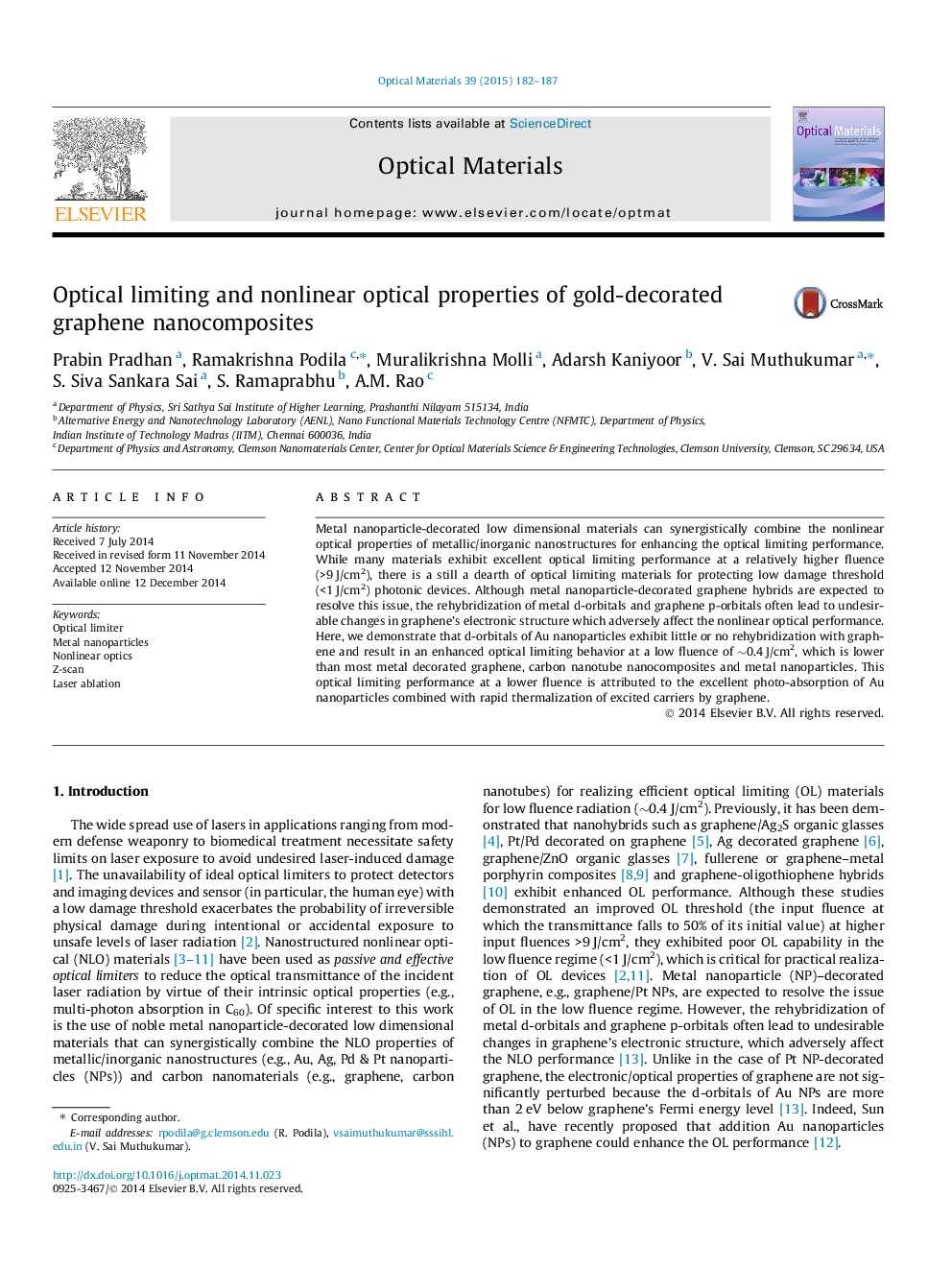| Article ID | Journal | Published Year | Pages | File Type |
|---|---|---|---|---|
| 1494246 | Optical Materials | 2015 | 6 Pages |
•Au-decorated graphene nanocomposites with superior optical limiting performance with lower limiting threshold <1 J/cm2 than Au nanoparticles or graphene nanostructures.•The electronic structure and optical properties of graphene remain unperturbed in metal–graphene composites when the interaction of graphene p-orbitals with metal d-orbitals is mitigated.•Surfactant free, one pot synthesis of gold-decorated graphene by laser ablation in liquid.•Graphene increases the viability of Au nanoparticles as an optical limiter by providing channels for faster heat dissipation.•Both nonlinear absorption and nonlinear scattering contribute to optical limiting response.
Metal nanoparticle-decorated low dimensional materials can synergistically combine the nonlinear optical properties of metallic/inorganic nanostructures for enhancing the optical limiting performance. While many materials exhibit excellent optical limiting performance at a relatively higher fluence (>9 J/cm2), there is a still a dearth of optical limiting materials for protecting low damage threshold (<1 J/cm2) photonic devices. Although metal nanoparticle-decorated graphene hybrids are expected to resolve this issue, the rehybridization of metal d-orbitals and graphene p-orbitals often lead to undesirable changes in graphene’s electronic structure which adversely affect the nonlinear optical performance. Here, we demonstrate that d-orbitals of Au nanoparticles exhibit little or no rehybridization with graphene and result in an enhanced optical limiting behavior at a low fluence of ∼0.4 J/cm2, which is lower than most metal decorated graphene, carbon nanotube nanocomposites and metal nanoparticles. This optical limiting performance at a lower fluence is attributed to the excellent photo-absorption of Au nanoparticles combined with rapid thermalization of excited carriers by graphene.
